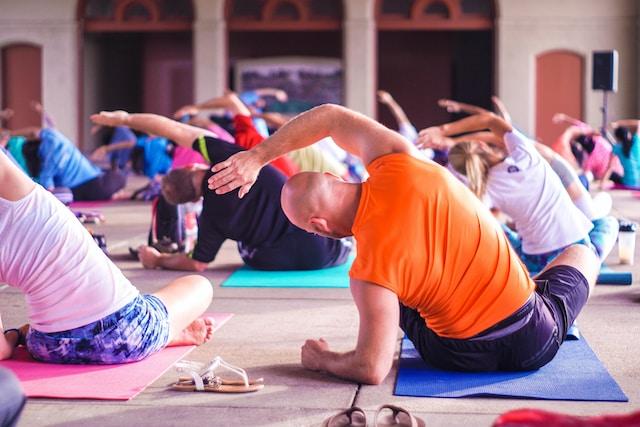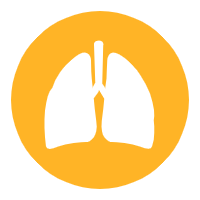Most of the leading health institutions have long been proponents of a minimum of 150 minutes of moderate-intensity exercise per week, in conjunction with a pair of muscle-strengthening sessions. This regimen is considered essential for maintaining good health and for cancer prevention.
Takeaway From The Study
Published in JAMA Oncology, this intriguing new study revealed the exercise habits of 22,398 adults. The average age of the participants was around 62, and none of them had a pre-existing regular exercise routine. To gather comprehensive data on their physical activity levels, each participant was given an activity tracker to wear on their wrist for a week.
The Results
The results were indeed eye-opening. Individuals who incorporated what's termed as vigorous intermittent lifestyle physical activity (VILPA) into their daily routine for an average duration of just 4.5 minutes witnessed a significant reduction in their risk of developing specific cancers such as lungs, kidneys, etc. Over a timeframe of six to seven years, their risk plummeted by 32%.
Furthermore, the research indicates that you don’t need to engage in VILPA for even this long to see benefits. Participants who committed just 3.4 to 3.6 minutes daily to such activities had their risk reduced by a substantial 17% to 18%.
The researchers aptly concluded, “VILPA could serve as a promising intervention strategy for those who, for various reasons, might be disinclined or unable to engage in traditional leisure time exercise."
So, how might these brief spurts of exercise be linked to a decreased risk of cancer?
VILPA: Vigorous Intermittent Lifestyle Physical Activity

VILPA stands for integrating “brief and sporadic” episodes of vigorous physical activity into your day-to-day life. Such activities usually last between one and two minutes and encompass tasks like brisk walking or quickly ascending stairs.
Emmanuel Stamatakis, Ph..., the principal author of this groundbreaking study, offers a clearer perspective. Drawing parallels between VILPA and the widely popular High-Intensity Interval Training (HIIT).
Power of Minimal Movement on Health
Small and seemingly insignificant movements might just be more potent than we give them credit for. All the participants wore a wrist tracker. This allowed the researchers to contrast the acquired activity data with records of cancer diagnoses, hospitalizations, and mortality, which spanned over a few years.
The revelations were indeed noteworthy. A mere average of four and a half minutes of VILPA daily correlated with a commendable 32% dip in the risk of cancers known to be influenced by physical activity. Furthermore, about 92% of this was executed in brief stints, often not exceeding a minute.
The bare minimum dosage of VILPA, roughly about three and a half minutes daily, corresponded with a 17-18% decrease in the risk of developing cancer. This was in comparison to counterparts who exhibited zero activity throughout their day. Earlier investigations highlighted the potential of VILPA to bring about swift enhancements in an individual's cardiorespiratory health. Highlighting the efficacy of vigorous activities, The researchers pointed out their dual benefits – they're not only practically advantageous but also extremely time-efficient.
Putting things into perspective, an overwhelming 70% to 80% of middle-aged to older adults in a majority of nations do not incorporate exercise into their leisure activities or avoid it altogether. In light of this, it’s stressed that the a pressing need to understand how our everyday routines, filled with incidental or lifestyle physical activities, can be harnessed for improved health.
What Is a Quick Burst of Exercise?

VILPA offers flexibility, yet is centered around one core principle—accelerating your heart rate swiftly. To the uninitiated, these rapid-fire exercise bouts can be somewhat elusive. So, what do they look like in practical terms?
If you're someone who thrives in a more structured exercise environment, Albert Matheny, R.D., suggests integrating the following into your routine:
- Short, explosive runs to push your cardiovascular limits.
- Intense cycling stints interspersed within your regular riding.
- A full-body engagement, rapidly pulling against resistance.
- A powerful overhead throw of a medicine ball down to the ground, engages the core.
- A compound exercise merging squats, push-ups, and jumps.
However, if structured workouts aren't your cup of tea, VILPA offers the beauty of seamlessly integrating into your day. Quick-paced stair climbing, robust walks, lugging around heavy grocery bags, or even spiritedly chasing your kids around—all these can be folded into the VILPA category.
But here's an essential distinction to be aware of: The effectiveness of these activities will greatly depend on your existing fitness level. For those who aren't particularly aerobically fit, even a brisk walk could potentially be sufficient to reach the 'vigorous' category of exercise. On the other hand, if you're someone who's been active and is moderately or highly fit, such a walk would barely scratch the surface of 'intensity' for you. For this latter group, more strenuous endeavors, like opting for stairs over an elevator, might be more fitting. Regardless of your fitness levels, commit to whatever is feasible for you.
FAQs
1. How do short bursts of activity impact health and longevity?
Recent studies highlight the positive impacts of brief activity spurts on longevity and disease risk reduction. For instance, just two-minute vigorous activity bursts, totaling a mere 15 minutes a week, are linked with a decreased risk of mortality.
2. How can I effectively integrate VILPA into my daily life?
To make the most of VILPA, it's all about intensity. aim for a heart rate that's the result of subtracting your age from 220. However, even a heart rate ranging between 120 to 150 can be beneficial. Everyday activities, such as briskly climbing stairs, jogging from a farther parking spot, or engaging in strenuous household chores, can all help you achieve your VILPA goals.
3. How can wearable fitness trackers help in my VILPA journey?
Integrating fitness trackers and other wearable devices into your regimen can be beneficial for numerous reasons. They provide tangible metrics, helping you set realistic goals and monitor your progress.




